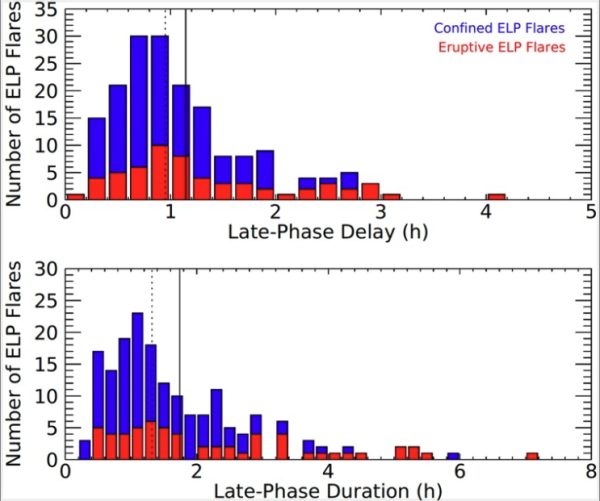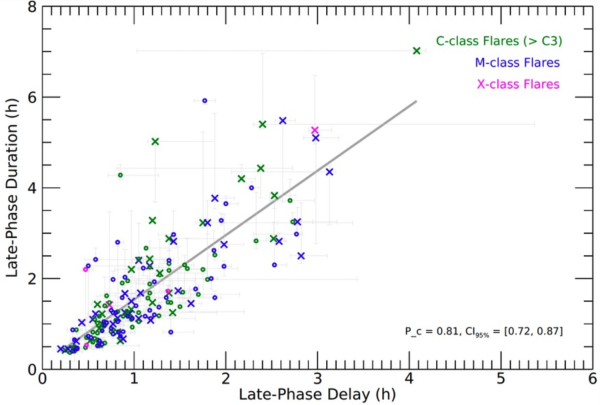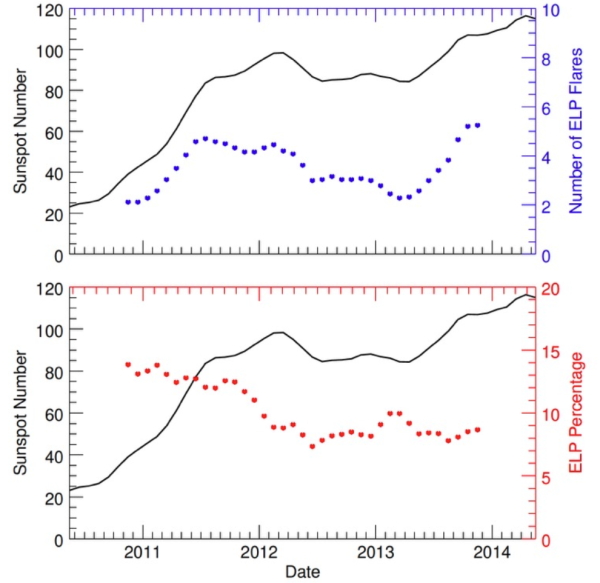The EUV Late Phase
| Nugget | |
|---|---|
| Number: | 507 |
| 1st Author: | Sascha ORNIG |
| 2nd Author: | |
| Published: | October 13, 2025 |
| Next Nugget: | TBD |
| Previous Nugget: | Time evolution of flare-accelerated electrons in the warm-target model, Time evolution of flare-accelerated electrons using the warm-target model |
Introduction
Solar flares exhibit different developmental stages: traditionally the onset, impulsive, and gradual phases. Recently Ref. [1] recognized a distinctive delayed phase in some events, termed the EUV late phase (see also the recent SolarNugget No. 504). There has been ample research into the formation mechanism(s) of this new part of a flare. It is now widely accepted that two mechanisms can be at play, sometimes in the same flare. One involves the longer cooling time of the larger late-phase loops (Ref. [2]), while the other explains the delay via additional heating occurring during the late phase, either in the form of a failed eruption or an additional phase of magnetic reconnection (Ref. [3]). However, little research has been carried out on the importance of the EUV late phase across a solar cycle (Ref. [3]) and its relation to other flare parameters.
Role of the EUV Late Phase Across the Solar Cycle
We have investigated (Ref. [4]) all 1803 flares with a GOES soft X-ray class at C3.0 and above between May 2010 and May 2014, identifying 179 EUV late-phase flares (roughly 10%). The number of EUV late-phase flares correlates well with the solar cycle. The percentage of flares characterized as EUV late phase flares, on the other hand, shows a strong negative correlation with the sunspot number (Figure 1).
Characteristics of the EUV Late Phase and Relation to Other Flare Properties
The late-phase delay can range from a few minutes to several hours, while the duration ranges from a couple of tens of minutes to over 7 hours (Fig. 2). Both of these time scales are generally larger for eruptive flares than for confined ones, signifying a possible difference in their creation mechanism(s). The median delay and duration found in this sample are 57 and 79 minutes, respectively. There is a strong relationship between the delay and duration of the late phase (Fig. 3), which can be explained via the longer cooling time of larger (late-phase) loops. Two thirds of EUV late phase flares are confined, while one third shows eruptive behavior. Generally, larger flares are more likely to produce an EUV late phase.


Conclusions
EUV late phase flares are more prevalent during times of low solar activity. The creation mechanism(s) may be different for eruptive and confined EUV late phase flares. There is a strong correlation between the delay and duration of this flare phase.
References
[1] "New Solar Extreme-ultraviolet Irradiance Observations during Flares"
[2] "Extreme-ultraviolet Late Phase of Solar Flares"
[3] "Extreme Ultraviolet Late-Phase Flares: Before and During the Solar Dynamics Observatory Mission"
